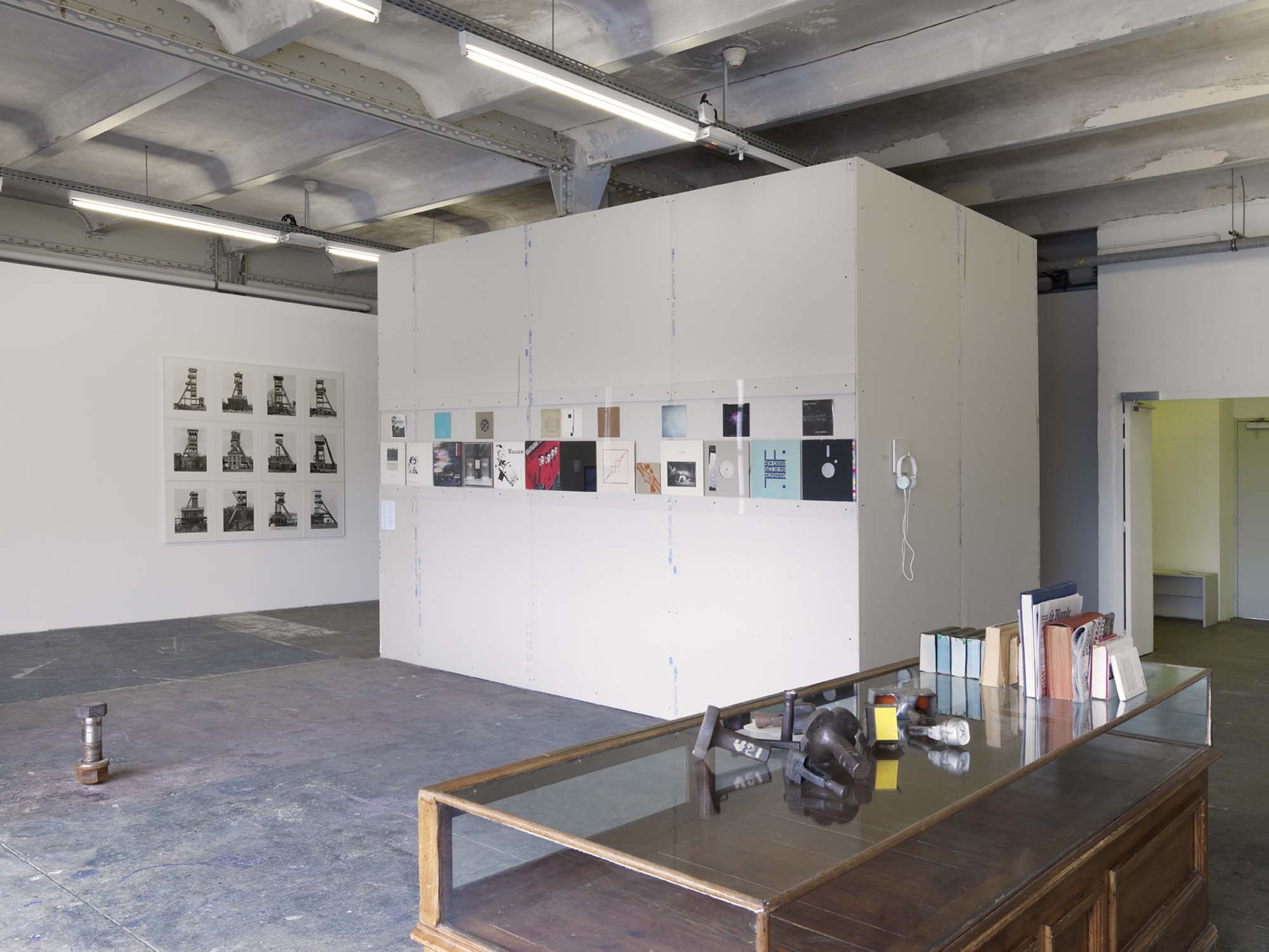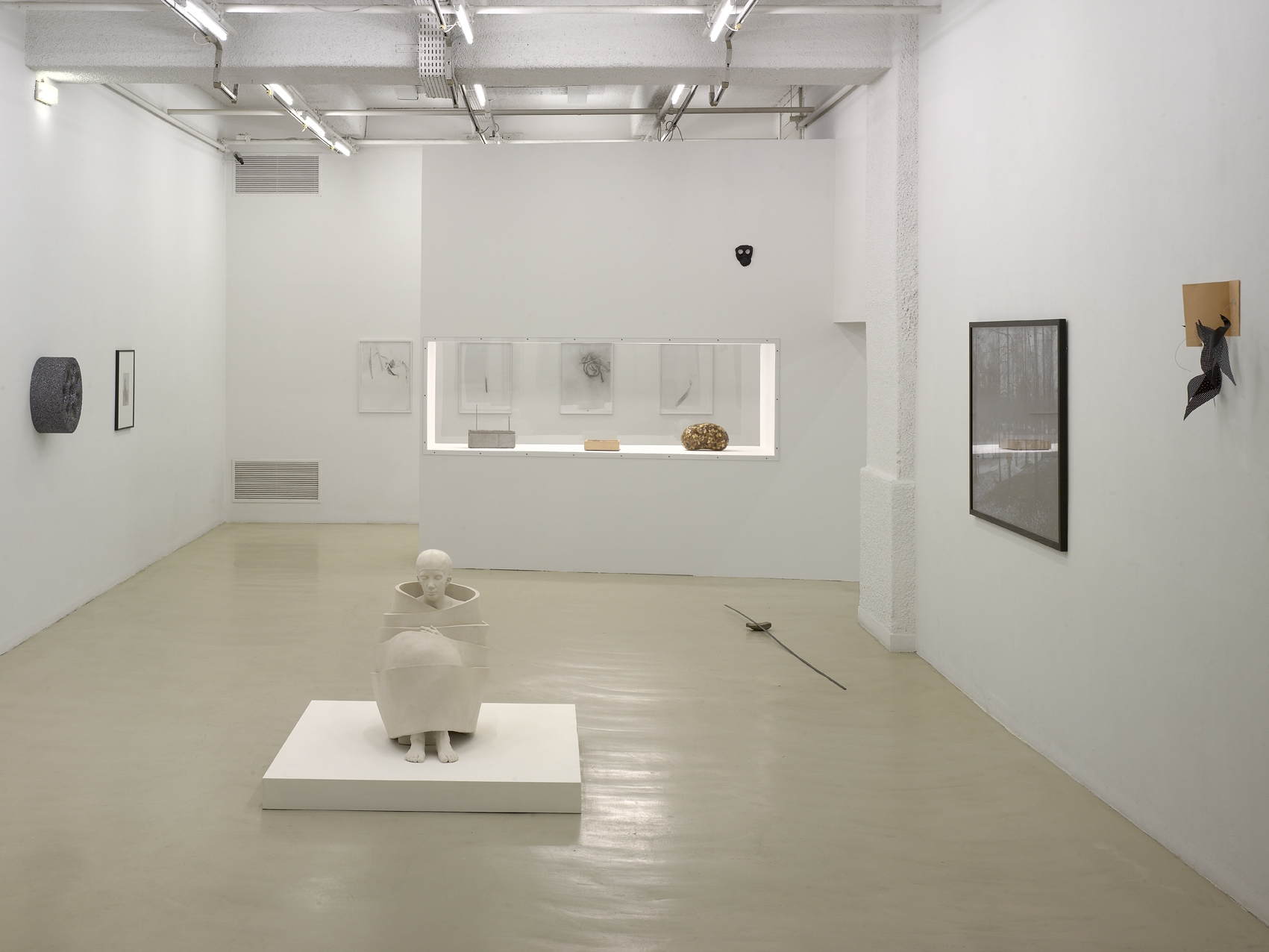More Cheeks Than Slaps
Mircea Cantor

Mircea Cantor, view of the exhibition More Cheeks Than Slaps, Centre d’art contemporain d’Ivry - le Crédac, 2011.

Mircea Cantor, view of the exhibition More Cheeks Than Slaps, Centre d’art contemporain d’Ivry - le Crédac, 2011. Fishing Fly, 2011, Oil drums, stainless steel, Plexiglas, pvc, 202 × 405 × 340 cm © Photo : André Morin / le Crédac - Courtesy Mircea Cantor and Yvon Lambert, Paris

Mircea Cantor, view of the exhibition More Cheeks Than Slaps, Centre d’art contemporain d’Ivry - le Crédac, 2011. Fishing Flies, 1990-2011, 69 vignettes, illuminated with 24K gold leaf, wooden frame with anti-UV and anti-reflection glass, 76 × 123 cm © Photo : André Morin / le Crédac - Courtesy Mircea Cantor, Yvon Lambert, Paris

Mircea Cantor, view of the exhibition More Cheeks Than Slaps, Centre d’art contemporain d’Ivry - le Crédac, 2011. Rainbow, 2011, Glass panels, artist’s fingerprints, etching ink, 250 × 500 cm © Photo : André Morin / le Crédac - Courtesy Mircea Cantor et Yvon Lambert, Paris

Mircea Cantor, view of the exhibition More Cheeks Than Slaps, Centre d’art contemporain d’Ivry - le Crédac, 2011. More Cheeks Than Slaps, 2011, Installation, neon (15 × 250 cm), mirror (49 × 250 cm) © Photo : André Morin / le Crédac - Courtesy Mircea Cantor et Yvon Lambert, Paris





More Cheeks Than Slaps is Mircea Cantor’s first solo show in an institution in the Île-de-France region.
The end of transparency in art plays a great role in Mircea Cantor’s work. Forming a mysterious body of work with many offshoots, Cantor’s creations are a plea in favor of the “need for uncertainty,” as the artist puts it. His art runs counter to the current overriding need to know and predict everything. Sensitive to the general context in which we live and his work exists, Cantor produces artworks that seem to be founded on three pillars, i.e., ethics, aestheticism and mysticism. He strives to discover the meaning of things, their origins, even their tradition. He does so not through nostalgia or a fondness for folklore, but rather to test how different fields of knowledge can make sense in the contemporary world.
When he discovered in 2007 the pre-Christian motif of the tree of life carved on wooden gates in a region of northern Romania, Cantor immediately connected this vernacular symbol with the double helix of the DNA molecule. For the artist the DNA motif conjures up the desire for certitude, a symbol of aspiration, one step towards a new world which he relates to the solar and to representations of the heavens. Describing DNA Kiss (2008), one of his first drawings to depict a stylized version of the DNA sequence, in this case in the form of lipstick kisses, Cantor says that “the DNA kiss is bound up with the idea of vibration.”
Seven, a sacred number (as in the seven days of creation, the seven notes of Western music, the seven classic arts, etc.) seems to crop up everywhere in Cantor’s work. Seven Future Gifts (2008), for example, is made up of seven different-sized concrete elements representing empty gift boxes. The same number is present in Rainbow (2011) as well. This floor-anchored sculpture is made up of glass panels (500 x 250 cm) on which the artist has drawn a rainbow in the seven fundamental colors. Cantor painted the motif using his own fingerprints, dipping his index in seven different inks, but the image figures in fact a barbed-wire motif. Through this transparent sculpture, which is both fragile and solid, once again it is a matter of identity and singularity. Here Cantor brings face to face two opposite motifs. The rainbow, emblem of peace and the covenant between heaven and earth; and a depiction of a fence, symbol of a forbidden territory. The rainbow, a meteorological and optical phenomenon that points up the continuous spectrum of visible light when the sun shines in the rain, is a rendering of the visible and the invisible, two subjects that lie at the heart of Cantor’s work. The famous grommet plant building is an ideal foil for this piece then. When displayed diagonally in one of the building’s light-filled galleries, the piece creates a dialog with this transparent venue. Viewers’ bodies can move around the work while their gaze can focus on the detail of the artist’s fingerprints, or on the rainbow motif, or even pass through the piece and continue its trajectory into the landscape in the distance.
More Cheeks Than Slaps, the title Cantor has chosen for his current show and a direct reference to the Gospel injunction to “resist not evil: but whosoever shall smite thee on thy right cheek, turn to him the other also,” is likewise the name of one of the works on view. The words, written out in reverse by the artist, are formally translated into neon lights and can be read thanks to their reflection in a mirror. The elements making up this installation form a passage and link the gallery in which Rainbow is on display and a second room in which the exhibition continues with the screening of Tracking Happiness, a video from 2009 that features music by Adrian Gagiu. The film depicts in an almost mythic way a group of seven women. Like angels vested in white, they are shown first walking in a line, then forming a circle, treading barefoot on fine sand, a broom in hand. Each of the marks they leave in the sand is swept away by the woman following directly behind. A truly peaceful image, the scene repeats ad infinitum, like a mantra.
In the other gallery Cantor gives voice to a completely different position with Fishing Fly (2011), a piece of sculpture measuring 400 x 350 x 146 cm that depicts a kind of airplane fashioned from recycled oil barrels. Fitted with a golden hook that hangs beneath its cabin, the aircraft recalls the esthetic of those toys made from tin cans in Asia and Africa. The object conjures up both a fighter plane and a fishing lure. Normally a symbol of speed, power and conflict, the craft is stranded here, posed off balance on a single wheel.
Hanging on the wall in the same gallery are 69 small illustrated vignettes, a collection that Cantor put together and framed himself. Since childhood he has kept the nearly complete collection of images that came in packs of chewing gum. The images all depict airplanes… warplanes in fact. On each the artist, like an illuminator, has drawn a hook in gold leaf.
Since the very beginnings of his work, Cantor has tried to make himself understood in a language that can touch the broadest possible audience, “Today the essential thing is not to speak globally, playing on the multinational card, but to speak universally, which is the opposite of global. It’s what globalization annihilates.”
Perfectly anchored in its age, Mircea Cantor’s work contains a subtle mix of the quest for happiness, utopian desire for a new age and an occasionally discouraged realism. This is the case of I Decided Not to Save the World (2011), a video piece that runs barely a minute and features a small boy saying in a cheerful, angelic, straightforward way that he has decided not to save the world. As everyone knows, out of the mouths of children and sucklings comes the truth, which is a nice way of not making promises that look like lies!
Video(s)
Film of the exhibition by Bruno Bellec © Le Crédac
Artist biography
-
Born in 1977 in Oradea, Romania.
Lives and works between Paris, France and Cluj-Napoca, Romania.
Partnerships
The exhibition enjoys the generous support of the Yvon Lambert Gallery, Paris and Fondation d’entreprise Ricard.
Media partners: Le Journal des Arts, Slash, artnet.fr, Kaléidoscope, code2.0

